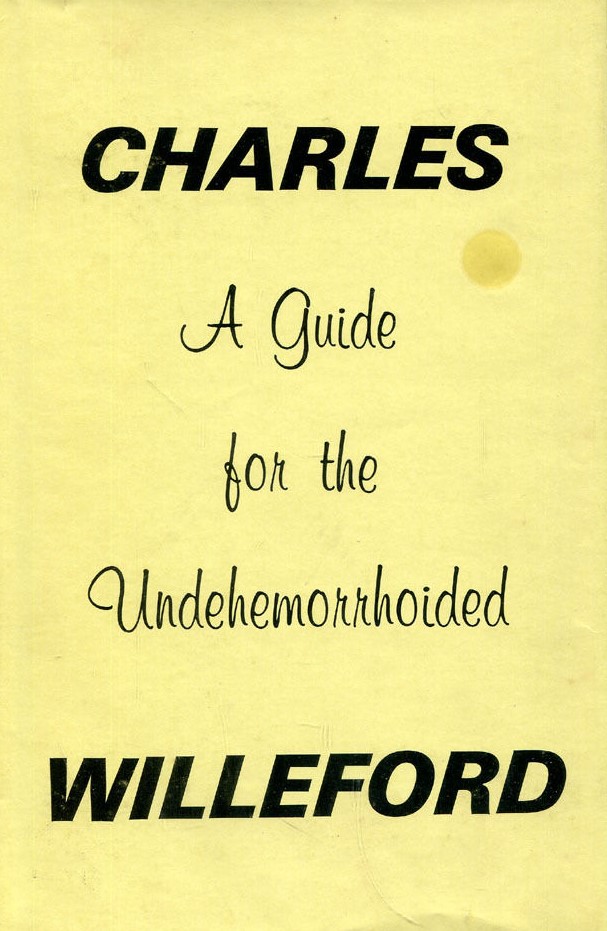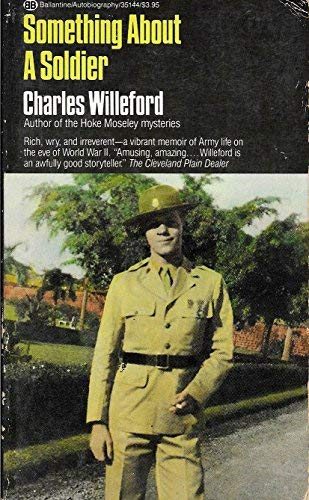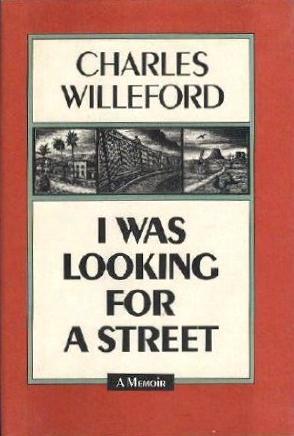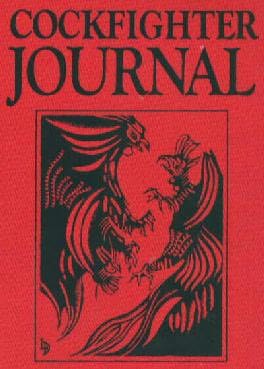That title is admittedly not entirely unique. There exists a volume called THE COLLECTED MEMOIRS OF CHARLES WILLEFORD, published by Disc Us Books in 1988 and consisting of the Willeford books I WAS LOOKING FOR A STREET and SOMETHING ABOUT A SOLDIER. Here I’ll be looking at those books and two more autobiographical Willeford volumes, A GUIDE FOR THE UNDEHEMORRHOIDED and COCKFIGHTER JOURNAL. To get the full extent of Willeford’s recollections you’ll have to track down several more books and essays in addition to the abovementioned works (a point I’ll go into in more detail at the end of this article), but in terms of single book recountings this foursome can indeed be said to comprise the Complete Memoirs of Charles Willeford.
Charles Willeford (1919-1988) was perhaps the single most idiosyncratic writer of the hard boiled school of pulp/noir fiction, as evinced by tough yet quirky novels like PICK-UP, THE WOMAN CHASER, THE BURNT ORANGE HERESY and MIAMI BLUES. But the man’s incredibly varied and eventful life, as recounted in Don Herron’s quasi-biography WILLEFORD, would appear to have been every bit as dramatic as his fiction. That supposition was confirmed, to these eyes, by Willeford’s four memoirs, which I’ll be covering in order of publication rather than strict chronology.
 The first of those volumes to appear was 1977’s self-published A GUIDE FOR THE UNDEHEMORRHOIDED, an account of the author’s late-1970s hemorrhoid surgery. This being a Willeford book, however, you can be sure there’s far more to it than just the topic under discussion. Among the issues covered are the politics of healthcare in 1970s America, the author’s unsettled childhood (the book actually began as a chapter of his then-in-the-works memoir I WAS LOOKING FOR A STREET) and the racial makeup of his surroundings, all contained in 32 impressively ordered pages.
The first of those volumes to appear was 1977’s self-published A GUIDE FOR THE UNDEHEMORRHOIDED, an account of the author’s late-1970s hemorrhoid surgery. This being a Willeford book, however, you can be sure there’s far more to it than just the topic under discussion. Among the issues covered are the politics of healthcare in 1970s America, the author’s unsettled childhood (the book actually began as a chapter of his then-in-the-works memoir I WAS LOOKING FOR A STREET) and the racial makeup of his surroundings, all contained in 32 impressively ordered pages.
Certainly the gruesome physical details of Willeford’s surgery and its painful aftermath are attention-getting. As he bluntly states, “there are not, simply, enough good years remaining to any man past thirty to make the pain of this operation worth it.” Yet the sardonic humor for which he was known is also quite evident in passages like this one: “An old soldier, fifty years old, scarred from old war wounds, and here I was, reduced by the extremity of pain to using a word like “Nursie!” for God’s sake.”
Willeford also makes note of the Hispanic orderlies who attend to him, and the old Cuban man with whom he shares a hospital room. This foreshadows the primary focus of his 1980s-era novels: the changing ethnic makeup of Miami, where Willeford spent his final years. Then there’s the cost of the hospital stay, about which Willeford observes that “To charge a man a dollar an ounce for his urine when he is suffering is pushing our free enterprise system beyond the bounds of human decency.” There’s also a flashback to the author’s early years, specifically a stay in a military academy that was only marginally more pleasant than his pain-wracked sojourn in the hospital.
It took nearly a decade for Willeford’s next autobiographical book to appear, but the wait was worth it. SOMETHING ABOUT A  SOLDIER (1986) is a raucous yet heartfelt account of his teenaged service in the army. Willeford served in WWII as a highly decorated tank commander, but he doesn’t discuss that portion of his military service. The incidents recounted in these pages took place during peacetime, and tend to lean toward the humorous—in common with the overall tone, which is bemused and affectionate.
SOLDIER (1986) is a raucous yet heartfelt account of his teenaged service in the army. Willeford served in WWII as a highly decorated tank commander, but he doesn’t discuss that portion of his military service. The incidents recounted in these pages took place during peacetime, and tend to lean toward the humorous—in common with the overall tone, which is bemused and affectionate.
He writes of his enlistment at sixteen (he had to add two years to his age), done to escape his impoverished home life. Skipping over the basic training portion of his service, Willeford commences his account with his time in the Philippines, where he was stationed in the Air Corps. Highlights of this section include an attack by fire ants, a torrid romance with a 22 year old working woman and the formation of a men’s choral group to sing at a G.I. gathering (which as you might guess didn’t go too well).
After two years Willeford returned home but, finding that his prospects there weren’t any rosier than they were before he joined the army, he elected to re-enlist. Stationed in the Machine Gun Troup in Monterey, he was charged with taking care of horses, an unexpectedly arduous chore that left him thoroughly worn out by the end of each day. Worse, a large portion of his weekly pay was withheld by the army (something to which I’m sure we can all relate). But again, there are some genuinely funny passages to be found in this section of the book, such as an episode in which Willeford accompanies a fellow soldier to meet the latter’s mail-order bride, who mistakes Willeford for her husband-to-be.
The ultimate take-away? That “all a man had to do in the Army was to live right, work hard, and all the good things would eventually come his way. It had certainly worked out that way for me.”
 The combination of grit and sardonic humor was once again evident in I WAS LOOKING FOR A STREET, which appeared, posthumously, in 1988. It focuses on Willeford’s Depression-era childhood, during which he lived the hobo lifestyle in vogue at the time. This followed the death of his mother from Tuberculosis, after which the young Willeford went to live with his grandmother in Los Angeles, a situation that eventually became “untenable” and forced him onto the road—but, as he makes clear early on, “no one can ever tell me I didn’t have a happy childhood.”
The combination of grit and sardonic humor was once again evident in I WAS LOOKING FOR A STREET, which appeared, posthumously, in 1988. It focuses on Willeford’s Depression-era childhood, during which he lived the hobo lifestyle in vogue at the time. This followed the death of his mother from Tuberculosis, after which the young Willeford went to live with his grandmother in Los Angeles, a situation that eventually became “untenable” and forced him onto the road—but, as he makes clear early on, “no one can ever tell me I didn’t have a happy childhood.”
Willeford’s experiences as a homeless youth involved much rail riding in the company of fellow hobos (different from bums, we learn, as hobos were looking for work and bums weren’t), a trip across the Texas border into Mexico, and a drama involving a stolen hat that continued to preoccupy Willeford well into adulthood—and inspires a lengthy rumination on hat wearing and the observation that “blacks know a lot about hats.” Throughout, the tone is nostalgic and affectionate, but also quite biting, and even downright macabre on occasion (as in a passage in which a boy loses a foot and the young Willeford is forced to carry said appendage), with a narrative that’s thoroughly relaxed and episodic. A thriller this book isn’t, but it is a solid and enjoyable depiction of a time long past by an author who knew it quite well.
The last book covered here is another posthumous publication: 1989’s COCKFIGHTER JOURNAL: THE STORY OF A SHOOTING.  Movie making-of diaries are usually pretty dull, and the fact that this one happens to be about the Monte Hellman directed Roger Corman production COCKFIGHTER (1974), whose shoot was apparently quite uneventful, would seem to increase that prospect. Yet Willeford’s lively reportage, with its hard-bitten sense of humor and frank observations, is once again a joy to read.
Movie making-of diaries are usually pretty dull, and the fact that this one happens to be about the Monte Hellman directed Roger Corman production COCKFIGHTER (1974), whose shoot was apparently quite uneventful, would seem to increase that prospect. Yet Willeford’s lively reportage, with its hard-bitten sense of humor and frank observations, is once again a joy to read.
COCKFIGHTER, adapted from Willeford’s novel of the same name, was his first and only attempt at screenwriting, a process Willeford claims was quite arduous. Willeford also played a supporting role in the film, which kept him onset for much for the shoot (after which he went back to his day job “teaching D.H. Lawrence to bewildered strangers”).
In this 91 page journal we’re treated to Willeford’s impressions of Roger Corman, of whom everyone on the crew was “afraid, nay, terrified” (as evinced by the evident lessening of tension that occurred every time Corman left the set); Monte Hellman, who Willeford believes didn’t entirely understand the subject matter (“he thinks this is a film about cockfighting”); the COCKFIGHTER novel, which Willeford claims is “a story about a man with an obsession…cockfighting is merely incidental”; and moviemaking in general, the process of which Willeford sums up with a sentence that’s as insightful as any I’ve read: “You never know until you try, and you would never try if you only knew.”
Further autobiographical tidbits by Charles Willeford can be found in the anthologies WRITING AND OTHER BLOOD SPORTS (2000) and THE SECOND HALF OF THE DOUBLE FEATURE (2003), and also his 1948 poetry collection PROLETARIAN LAUGHTER (whose contents are included in the hardcover edition of THE SECOND HALF OF THE DOUBLE FEATURE). The latter contains the only writing Willeford ever published about his combat experiences, which were evidently quite gruesome, involving rape, decapitation and mass killing. Furthermore, there exist hundreds of uncollected articles Willeford published in various periodicals that most of us will probably never get a chance to read. It’s a good thing, then, that the above profiled books exist, standing as an excellent portrait of the man and his point of view, which was nothing if not distinct and compelling.
